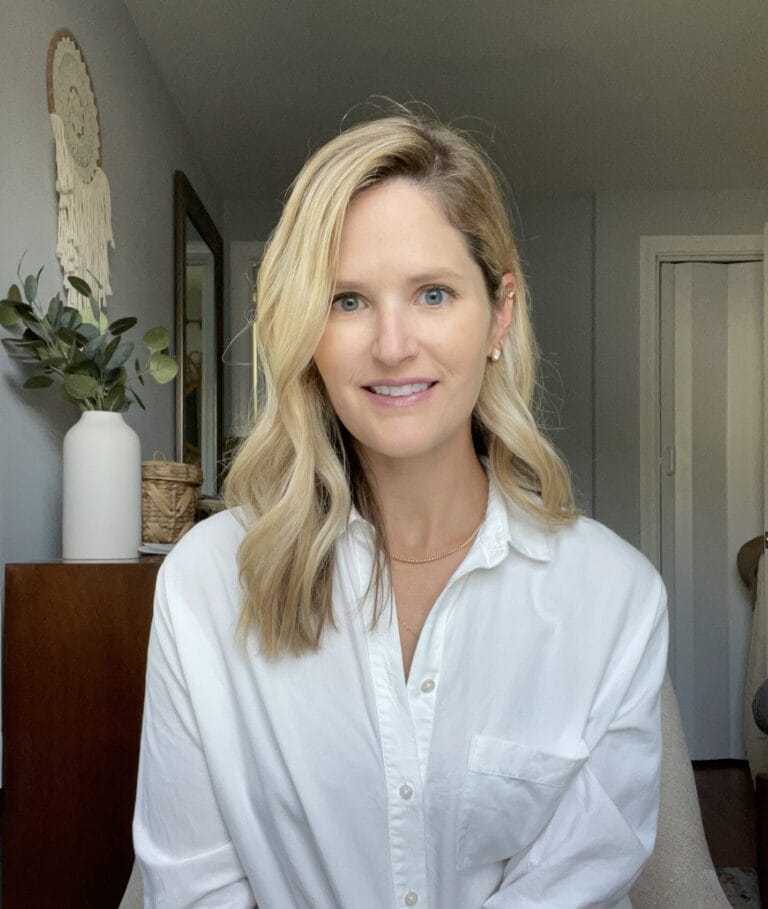
Real School Climate Change: New Approaches For Better Behavior webinar series was led by Dr. Barry Prizant and his colleagues Emily Rubin, MS, CCC-SLP, and Amy Laurent, Ed.M, OTR/L. Their webinar “Social Communication + Emotional Regulation: An Environment for School Success” provided an overview of the SCERTS® Model and detailed strategies for preventing problem behavior. Afterward, our co-founder and co-CEO Clay Whitehead sat down with Dr. Barry Prizant and Amy Laurent to discuss questions submitted by audience members.
Below is a summary of their discussion.
CW: Barry, the first question is for you. How is it possible to focus on social communication and emotional regulation with all the pressure for teachers to focus on academic performance?
BP: Clay, that’s a great question. One of the things that we really believe about the SCERTS model is it provides the framework to support children in all activities. We don’t see this as a dichotomy in terms of focusing on social communication and emotional regulation versus academic performance. We see success in social communication and emotional regulation being a very important component of success in academics. As the famous Russian psychologist Lev Vygotsky said, most learning —70% to 80% — occurs in social context, which requires effectiveness in social communication.
CW: Interesting. Amy, do you want to take this next one? How is SCERTS different from approaches that rely on behavior management strategies?
AL: So as we introduced in the section of the webinar talking about emotional regulation, emotional regulation is really focused on helping students acquire developmental capacity. Strategies that they have themselves, or how they’re able to access other people to regulate their own emotions and their arousal levels. To delay transitions, to delay gratification, to tolerate transitions, those types of things. And that’s really a different approach than a traditional behavior approach, which really focuses on control and compliance and often consequences. Those approaches rely on external factors. There are other people to be in control, and the emotional regulation approach is really about developing capacity within the students themselves.
CW: Barry, here’s another one for you. How do you convince colleagues that focusing on emotional regulation is not simply letting students get away with “bad behavior” without strict consequences?
BP: Well, it’s very interesting that in our school consulting very often we get this question. As a matter of fact, I was working with a behavioral consultant who really came to embrace an emotional regulation strategy and supporting students. She said, “But my colleagues are saying we’re just letting them get away with crime.” We believe that an emotional regulation approach, in the long term, really helps a student in such a way that they do not have to engage in problematic behavior if they’re well regulated and if they’re supported appropriately. I think this is also an appropriate time to mention that SCERTS is not just about supporting students with autism. It’s about supporting students who have challenges, especially in social communication and emotional regulation. Many mental health professionals who don’t deal exclusively or even predominantly with students with autism are now finding the SCERTS model effective.
Emotional regulation comes out of decades of research on the development of the capacity to be most engaged, to be able to be available for learning and engaging. So there’s a strong research base that says if we can help students with the appropriate supports to do this independently, as Amy just mentioned, then we don’t have to rely upon external control and consequences. As a matter of fact, we’re learning more and more that trying to control student behavior primarily based upon consequences is not an effective approach, and Dan Crimmins had mentioned that in the previous webinar to ours.
CW: Amy, are the SCERTS strategies easily applied in a regular classroom setting? For an example, can transactional support strategies be utilized in general education environment with 24 kids?
AL: Absolutely. So in the video example that you all just watched in the webinar, the young boy was involved in a regular education classroom as an inclusive setting. You can see that the teacher was able to implement the support really with that particular student in mind, but also that the class benefitted as a whole in terms of the class’s ability to actively engage and connect and communicate with one another, and to fill their roles in the different activities. The goal of SCERTS is being able to put these supports into place and embed them in naturally occurring routines for students or naturally occurring activities to increase their active engagement and their ability to learn. What we often find is that it benefits everybody in the class as well.
CW: Barry, hope you can take the next one here. Do you feel that it’s better to implement the SCERTS program in a few classes before introducing to the entire school to gauge success within the population?
BP: Well, I think the answer really depends upon where the school is currently. Some schools and agencies we’ve consulted came to us saying they’ve read about SCERTS or they’ve gone to some trainings and they really want to embrace SCERTS. In those cases, it can be introduced to the whole school if the school is looking at changing their current way of doing business, if you will. In other situations, we an SLP or an OT or a special educator or an educator who has read about SCERTS and been exposed to SCERTS. They don’t necessarily have everybody on board, or they have some good questions coming from other staff members about SCERTS, and in that case we sometimes recommend having some pilot classrooms where we could really engage the staff, train the staff well, and have them implement the SCERTS model to help other people in the school or in the agency understand what SCERTS is about. So in a sense it’s a top down versus bottom up approach. A top down approach would be exposing the whole agency or school to SCERTS and all of the staff simultaneously as opposed to a bottom up approach. We also talk about predictors for success of SCERTS being implemented in a school setting.
So that has to do with the current training philosophy and experience of the staff, so for example a school that already has a good team-based model would be much more likely to be successful with SCERTS for a schoolwide approach. When folks in the school are very developmentally trained, that would be another example of SCERTS being successful. If a school program already uses multimodal teaching and a lot of visual supports in all of their classrooms, then that would be a very strong, positive predictor of SCERTS being implemented. The answer to the question really is, and this is very much SCERTS philosophy, when we work with families we want to be able to approach the families where they are. When we work with students and staff we want to approach them with where they’re at developmentally, so when we work with a whole school or agency we want to approach them with where they’re at and provide the appropriate support to enable them to adopt and implement SCERTS.
CW: Amy, I’m wondering if you can tell us how to measure progress in social communication and emotional regulation?
AL: Sure thing. When we talked about the overview of social communication and emotional regulation, I introduced a concept of a curriculum within the SCERTS model, and that curriculum we use is an assessment, it’s a scope and sequence of goals and objectives, really. That scope and sequence of goals and objectives is used to select objectives that can embedded directly into a child’s IFSP or IEP and monitored on a regular basis. We can look for progress in that traditional monitoring that we tend to use in the school environment. One of the things that’s really important to mention when we talk about progress in social communication and emotional regulation, is that we’re really looking for a child to be able to demonstrate their skills or abilities in those areas in a variety of different contexts with a variety of different people. It’s not just can a child or a student do something in an activity or in a therapy session, but can they demonstrate a greater ability to initiate interaction with people out on the playground, within the context of the cafeteria, and in the classroom as well. That’s going to extend to the home environment. We really think across contexts, to the home, school, and community.
We talk about this as authentic progress — progress that really has meaning because it contributes to the individual’s quality of life and shows that they have gained developmental capacity that they’re able to use across different activities and environments. One of the other things to talk about in terms of progress as well as social communication and emotional regulation is how we measure that programmatically. Within the context of the SCERTS program and the SCERTS manuals, there are forms called the SCERTS quality indicators. These forms can be used in a school or in a classroom to demonstrate how staff is moving forward with supporting kids in terms of their acquisition of greater communication and regulatory skills. We think about it from a variety of different perspectives, both for the individual student, as well as the classroom, but we’re always thinking about it within the context of where the child or the student needs to function.
CW: Barry, how do you involve families? How do you help parents understand SCERTS?
BP: SCERTS is a very family centered model and again, we like to say that we truly walk the walk, we don’t just talk the talk. Built into the SCERTS assessment process, we get detailed information from parents through questionnaires and interviews, and they actually can be involved in the assessment process by helping us understand their child’s challenges and their child’s strengths across many different settings. We really try to connect with families at their level, so under the transactional support domain, we have components that we refer to as educational support and emotional support for families. We actually build into a plan how we are supporting parents and families educationally and emotionally. If you want to get a better sense of this, one of the previous webinars I did for PresenceLearning was on family professional collaboration and much of what I spoke about in that webinar certainly was greatly influenced by our practices in the SCERTS model.
CW: Amy, SCERTS seems very detailed and comprehensive. How do you suggest that a school moves into adopting SCERTS?
AL: A school really needs to think about where they are in terms of some of those indicators that Barry mentioned that are prognostic for success. Identify where you are currently functioning with the administrator support, the team approach, and the family-centeredness. This will help you identify whether your school is ready for a more top down approach where you think globally about what things really help propel SCERTS forward and are consistent with SCERTS practice and try to do that across the school. It will also help you identify if you need a really detailed bottom up approach instead, where the school looks at an individual child or an individual classroom and tries to do SCERTS assessment processes and move forward. There are lots of different ways to think about moving forward. You can also take a look at our resource list for more resources and ideas about how to move forward with adopting SCERTS.
CW: Great. Barry, I hope you can take this one. What type of training is needed for SCERTS to be implemented by a school based team?
BP: One of the things that we like to emphasize, Clay, is that moving into SCERTS is a process. In terms of the type of training, as I alluded to earlier, it really depends upon what that team comes to us with and what they bring to SCERTS. For example, being a team-based approach, SCERTS is always much more successfully implemented when there is input and true collaboration amongst speech-language pathologists, occupational therapists, school psychologists, special educators, regular educators, and certainly with that support from the administration. We do do introductory and advanced trainings live on the SCERTS model and on the resource list, you will see the websites of the SCERTS collaborators that you can check to see where training is being provided. One of the things that we’re hoping will happen in the future is the possibility of more in depth web-based training beyond the very brief introductory level that we spoke about today. Right now, there’s a great demand for information on SCERTS, we certainly have a number of publications that are available on scerts.com as well as on our individual websites that can be downloaded. Stay tuned for more information about ways for school-based teams and professionals to be trained in the SCERTS model.
CW: Barry and Amy, can you share your thoughts on general education teachers? Specifically we’re wondering how easily these strategies can be taught to and implemented by a general education teacher within a mainstream classroom.
AL: That’s a great question. I think, again, if we think about the video example that we used as part of this presentation it gives us some information as to how a regular education teacher is able to embed some of these strategies in a regular education environment. I’d also like to mention that there’s lots of ongoing research regarding SCERTS, and particularly our colleague Amy Wetherby, who is at Florida State University, is spearheading a project called Classroom SCERTS Intervention. That intervention study was a four year grant that looked at the implementation of SCERTS within regular and special education environments, but this was really about training regular education teachers to implement the SCERTS framework within their classrooms. It’s a little too early to talk about the results, but they’ll be coming out soon and Amy’s rather excited about them. It’s something that we’ve been able to demonstrate both within all of our consulting practices and our individual work with individual teachers and students as well as through the education that we’ve done. Now it looks as if we’ll have some good research to back up that regular education teachers are able to take these strategies and infuse them in their classrooms with fair ease and good results as well.
CW: Barry, is there anything you want to add to that before we close?
BP: Well, I’d just like to add especially because some of the previous webinars in this series presented within a positive behavioral support model, and that is SCERTS has been adopted in schools that have already been trained in PBS or PBIS. The feedback we get is that PBIS helps to set the general set of values that will guide the school and certainly helps the school administration communicate back to all of the teachers. And SCERTS does that as well, but SCERTS gets down to specific individual and individualized strategies for individual students. As we’ve said over and over again, this is not just about students with autism, it’s about students who have challenges in other developmental capacities, especially social communication and emotional regulation. It’s also about setting the appropriate school climate that supports all students in their learning and regulation.
To watch the entire 90-minute webinar by Dr. Barry Prizant, Amy Laurent, and Emily Rubin, click here.




